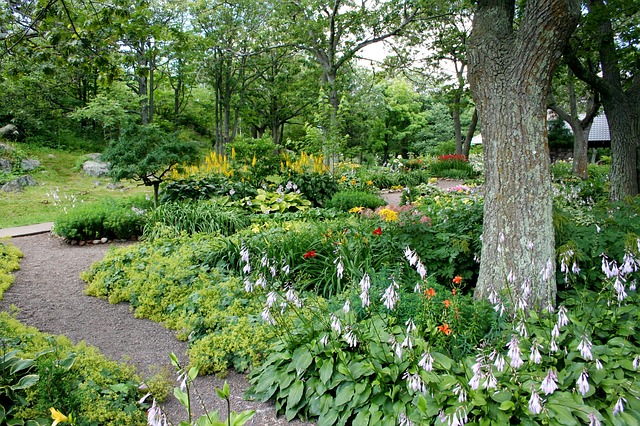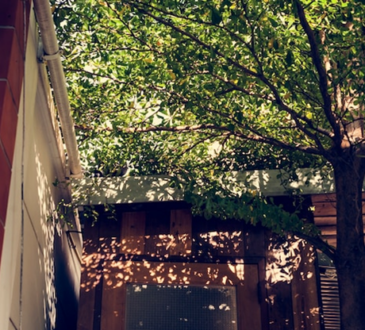
Introduction
You have to put a lot of thought into landscaping your property and trees are a big part of it. With hundreds of thousands of varieties, choosing the right tree for your yard isn’t an easy task. Even after you plant the tree, you have to do maintenance or search for “tree service near me” and hire professionals to do the job for you. Let’s check out things to consider when choosing a tree for your yard:
The Considerations
- Look at the big picture – When choosing a tree, you have to take multiple things into consideration. Get the notepad and make a rough sketch of your property and try to come up with a landscape design. When you have the hardscaping features, bushes, shrubs, water features, and garden sketched out, you can decide on the trees that will suit a specific purpose or complement and tie the aesthetics of your outdoors perfectly.
- Purpose of the tree – While you are planning the layout of your yard and your garden, you should give hard thought to the purpose of the tree. Trees take a lot of time to grow and can become a permanent part of your home. So, you need to figure out why you want the tree.
Is it just for the looks? Do you want it to provide ample shade to create a comfortable micro-climate and reduce the energy bill of your home? Do you want a tree for its exquisite foliage during the fall season or do you want a tree that blooms in all its glory during spring?
Do you want the tree to attract wildlife to your property? Or do you want to reach one step further to your sustainability goal and want a productive tree that produces plenty of fruits every season? Once you know the purpose of the tree, your options would be slimmed down.
- Property limitations – When choosing a tree, there would be many limitations that restrict you from planting the ideal tree. Property restrictions top that list. For instance, if you want a large tree with a wide canopy and ample shade, you may not be able to plant that tree due to the limited space of your property.
Apart from that. You also need to consider the utility lines that go under and around your property. For instance, you have to figure out the spread of the tree and its height upon maturity so that it doesn’t obstruct the power lines. The same holds for the tree’s root system. You can’t plant it in close proximity to underground pipes. You’ll have a hefty fine or a lawsuit slapped on you if the tree roots damage the sewer, gas, septic, or water pipes.
You also need to be mindful of your neighbors. While you may prefer shade, your neighbors may not. That’s why you need to consider the effect of the tree on the surrounding properties. You don’t want to have a feud with your neighbor over petty things like leaf litter. You also need to research the local regulations. Figure out how far the tree needs to be from the roads and sidewalk.
- Size – As mentioned before, you can’t have disproportionately huge trees on your property. It’s going to be inconvenient for you and everyone else in the neighborhood. Huge shade trees on a small lot can also bring down the value of your property. You also need to consider the root system of the tree, so that it doesn’t damage the patios, pathways, foundations, etc.
As a general rule, you should choose trees that fit your lot size and should maintain a gap of 30 percent of their height from other nearby structures. That means, if you have a tree that grows as high as 100 feet, it should maintain at least a 30 feet gap from other trees, roofs, power lines, etc. if you can choose a tree carefully, it will become a priceless asset on your property and increase the value of your home.
If you have a small patio, you can go for dwarf trees that grow around 10 feet tall. Most of these trees bear delicious fruit, while others can be excellent ornamental pieces. Japanese maples fall in this category.
- Temperature – Before you decide on a tree, you should find out your USDA plant hardiness zone. This metric is based on the coldest annual temperature in your region. It shows if the list of trees you have narrowed down can survive the harshest temperatures during the winter season.
While you account for extreme cold, don’t forget to account for extreme heat. You also need to figure out if your chosen trees have enough heat tolerance for the local climate. The American Horticultural Society shows you an interactive heat map that can be used as a reference.
You can also search the internet for other such climate zone system maps that show the temperature extremes and other environmental factors of your region.
- Precipitation – Some trees can survive with a little bit of water, while others are thirsty enough to require several watering sessions every week. It can shoot your utility bill to the moon if you aren’t prepared. If your tree needs moist soil all the time, you also have to invest in a good irrigation system. Think about the maintenance that will go into the tree and make sure that you’re ready for the commitment before you decide on it.
- Soil Type – Some trees thrive in loamy soil while others require heavy clay. Some can survive in barren environments while others need nutrient-rich fertile soil to show their full potential. While some do well in alkaline soil, others prefer more acidity. Check the soil type in your property to make sure you get the right tree.
Conclusion
The above-mentioned things should help you narrow down your decision and choose the perfect trees for your yard. Make sure that it suits the local soil conditions and environment. For maintenance, you can hire a professional by searching for “tree service near me”.




